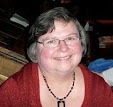It is unfortunate that students in high school never get to know the story behind the story. It is almost certain that every student reads at least one Ernest Hemingway novel, novella, or short story. Maybe, if there is time, a teacher when teaching about the author will mention Hemingway's service in wartime, his fascination with bullfighting and his tragic end of life. What is left out is his struggle to become a writer, his bohemian life-style in Paris, and unfortunately, his treatment of women. These are the things that make an author come alive and therefore his works.
The Paris Wife is a fictionalized account of Hemingway's marriage to his first wife, Hadley Richardson. There is enough history here that the reader knows that not too much of the book has been fictionalized. Richardson and Hemingway are introduced as young people who are living in Chicago. They become infatuated with each other, fall in love and are eventually married. Hemingway is writing for The Toronto Star and the Cooperative Commonwealth. Hadley's mother was very over-protective of her as a child, she heard the gunshot that was the cause of her father's suicide and when she met Hemingway a bit unsure of such a relationship. They were married after less than a year, a courtship that was carried on mostly by short visits and letters. They decided that they would go to Rome to live for a while, but Sherwood Anderson convinced them that Paris was a better place to be.
McClain vividly describes their life in Paris from their impoverished accommodation, to the dance halls, the sights and sounds of the Latin Quarter, and of course their association with the members of the "Lost Generation." I have always been fascinated with how all of these incredibly creative people converged in this city and managed to produce volumes of literature. From Stein to Dos Passos to James Joyce to Ezra Pound, Fitzgerald and Hemingway. There is an energy that one senses that was passed from one to the other. The wives, including Alice B. Toklas, were an important support group and one has the distinct impression that that's who Hadley was.
The gradual disintegration of the marriage was hastened by the attention paid to Hemingway by one of Hadley's best friends, Pauline Pfeiffer, a wealthy fashion designer who was living in Paris. The Hemingways' lives were marked often by traveling to Austria, Pamplona, and even back to North America. It was not uncommon that the two traveled separately. It was during one of these trips when Ernest returned to Paris without Hadley that he began an affair with Pauline. They eventually agreed to a divorce, but remained on amicable terms for the sake of their child, Bumpy (John Hadley Nicanor Hemingway). Pauline eventually becomes Hemingway's second wife and Hadley marries Paul Mowrer.


No comments:
Post a Comment